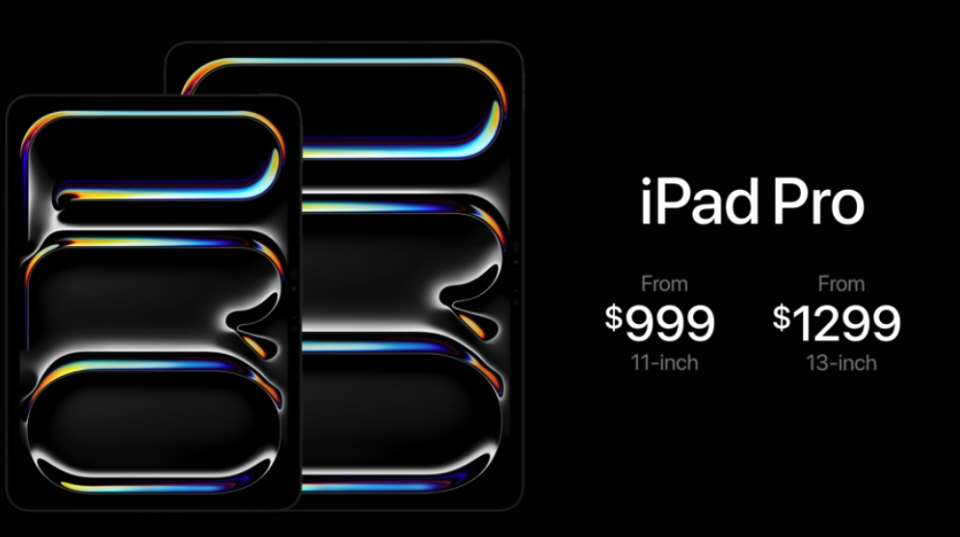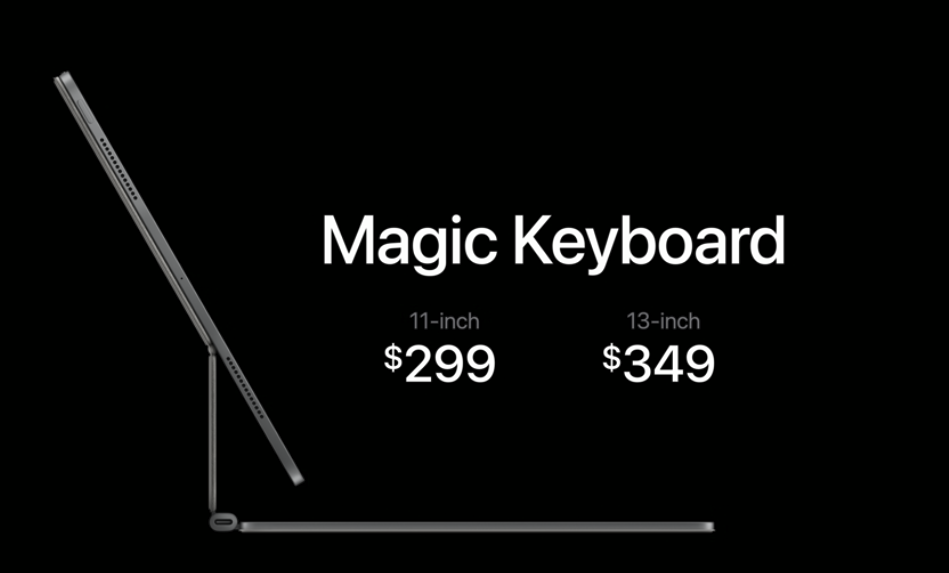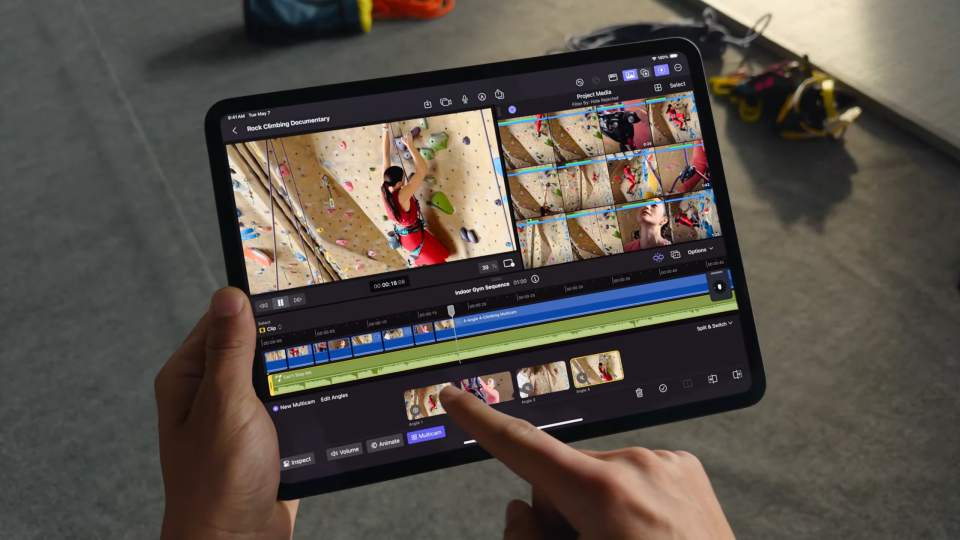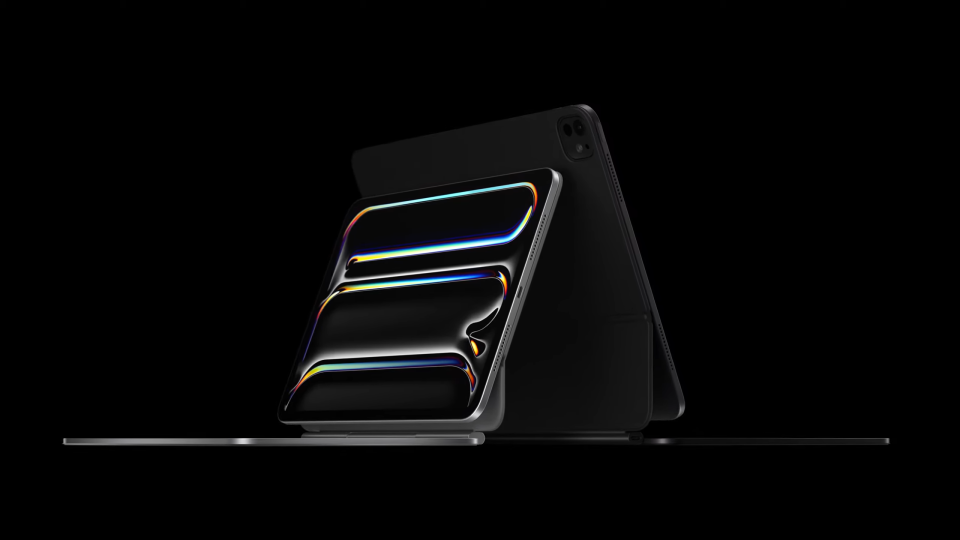Is the new iPad Pro M4 good enough to replace your laptop?

On Tuesday, Apple announced the long-awaited OLED iPad Pro featuring the new M4 chip at its "Let Loose" virtual event. This iPad Pro is groundbreaking in a few ways, making it a serious rival to laptops like no tablet before. But can it fully replace your MacBook?
Apple has long been marketing the iPad Pro as a laptop replacement, particularly with the help of the Magic Keyboard accessory, which also got a stunning refresh today. However, the iPad has struggled to find its way in the shadow of the MacBook. That might finally be changing now.
"This is the biggest day for iPad since its introduction," said Apple CEO Tim Cook at the outset of the event.
I have switched between using my iPad and my laptop as my primary mobile computing device, and I can confidently say that the new iPad Pro and the updated accessories Apple unveiled on Tuesday will genuinely transform the iPad experience. The question is, are these updates transformative enough for the iPad to truly replace your laptop? Who is the new iPad line-up for?
Here's how the M4 OLED iPad Pro and Apple's redesigned accessories compare to a traditional laptop or MacBook.
M4 OLED iPad Pro price and specs

Apple outdid itself with the iPad Pro M4. It's the thinnest Apple product ever made, even thinner than the iPod Nano. Thanks to the new M4 chip, which features a new display engine, a neural engine for AI tasks, four times faster rendering than the M2 chip, and a 10-core GPU with support for ray tracing, it's also currently more powerful than the MacBook Pro.
The real star of the show on the M4 iPad Pro is the cutting-edge Tandem OLED display. Not only did Apple finally bring OLED to the iPad Pro, they created a new type of OLED display that uses two OLED panels on top of one another. It boasts 1,000 nits of brightness and 1,600 nits of peak brightness in HDR. Plus, a nano-texture glass display is now an option to minimize glare even more (although this option is only available on models with 1TB or 2TB of storage).
There's a lot of room for customization on the iPad Pro now, especially when accessories are added.
So, for comparison, let's say you're trying to decide between the 13-inch M4 iPad Pro and the M3 MacBook Pro, which is Laptop Mag's best overall laptop as of this writing.

The 13-inch M4 iPad Pro starts at $1,299, while the M3 MacBook Pro starts at $1,599. If you want the iPad Pro to be a proper laptop replacement, you'll need the new Magic Keyboard for iPad Pro, which adds $349 to your M4 iPad Pro setup, bringing the total to $1,648. That's $49 more than the M3 MacBook Pro.
However, the M3 MacBook Pro comes with 512GB of storage for that price, while the M4 iPad Pro only includes 256GB of storage. Upgrading to 512GB increases the cost by an additional $200, bringing the total for the M4 iPad Pro to a whopping $1,848, $249 more than the base 14-inch M3 MacBook Pro.
The bottom line on the price is that the new 13-inch iPad Pro revealed today is still more expensive than the MacBook Pro. Is it worth the higher price? That depends in part on use cases, but value is also essential.
Flexibility: The iPad Pro's greatest strength

Flexibility is the iPad's most significant advantage over the MacBook or any other laptop, even the best 2-in-1 laptops. A typical laptop has one form factor: A screen with a keyboard deck and touchpad. You might be able to flip the screen around to use it like a tablet or even detach it, but that main form factor is the most functional way to use a laptop and often the only way.
In contrast, the iPad is modular. You can attach it to the Magic Keyboard like a laptop, use it as a tablet, or pick up the newly redesigned Apple Pencil to write notes or draw. The new squeeze controls on the Apple Pencil even allow it to function like a mouse. Even though you can do some of those things on some laptops, the iPad's performance across different modes is more seamless and balanced.
The M4 chip in the new iPad Pro also means you don't have to sacrifice computing power to get that additional flexibility. The iPad is capable of effectively everything a laptop can now (although it's still somewhat limited by software compatibility like any other Apple device).
The bottom line on flexibility: The iPad Pro handily wins the flexibility category thanks to its modular design.
Connectivity: Still a struggle for the iPad

Unfortunately, connectivity continues to be an issue on the iPad. On a MacBook, you get at least two USB-C Thunderbolt ports, an HDMI slot, and an SDXC card slot. The new iPad Pro M4 is incredibly thin, which is fantastic for portability.
However, one of the slim chassis's few drawbacks is that it is simply not large enough for the same ports as the MacBook.
For instance, there's just no way to squeeze an HDMI port into the iPad. It has one main USB-C Thunderbolt port, and the Magic Keyboard adds one more, although that port is specifically for charging.
Of course, you can always buy one of the best USB Type-C hubs to give your iPad more ports, so it's not a deal breaker for most people.
The bottom line on connectivity: If you don't have a hub for your iPad Pro, the MacBook wins on connectivity.
Practicality: A narrow gap between iPads and laptops

The M4 iPad Pro is undoubtedly an incredibly powerful tablet, but is it practical for replacing your MacBook or laptop for everyday tasks? That depends.
When people ask me how I get by using my iPad instead of a laptop, I often tell them the iPad is better at what I want to do than a laptop.
In college, that meant taking notes and web browsing. In my everyday life now, I use the Notes app on my iPad as a whiteboard for brainstorming. I edit photos I take on my iPhone on the iPad's larger screen. I use the iPad to watch movies and even play games when I'm on the move. The iPad is particularly convenient when traveling because of its flexibility and light weight.
An iPad is more practical than a laptop for my personal use cases. That might not be the case for everyone. Of course, practicality depends partly on software, particularly the pro-level apps MacBook Pro and iPad Pro users need.
The M4 chip allows developers to improve their iPad apps significantly. Final Cut Pro is already getting some serious upgrades on the iPad, including live multi-cam, enabling you to connect up to 4 other cameras through the new Final Cut Camera app to view footage live in Final Cut Pro on the iPad. You can now also edit directly from an external drive, dramatically improving the convenience of editing on an iPad compared to a Mac.
The iPad is particularly convenient when traveling because of its flexibility and light weight.
More changes and new features like this will hopefully improve iPad apps to make them as intuitive and capable as Mac apps. Plus, it's important to remember that the iPad will receive a significant software update in June during WWDC 2024.
iPadOS 18 is expected to bring new AI features to the iPad and hopefully improve navigation, file management, and other everyday tasks.
The gap between the iPad Pro and the MacBook regarding ergonomics is also closing. We predicted Apple would cut down the size of the gap along the top edge of the Magic Keyboard to add more room for a larger touchpad, and the company did just that. The Magic Keyboard also has a function row and an aluminum palm rest, so it's like a MacBook keyboard.
All those factors mean that whether or not an iPad Pro is a practical laptop replacement comes down to personal use. You can effectively do all of the same things on an iPad now that you can on a MacBook. There may still be exceptions, like specific apps only available on MacOS. However, the M4 iPad Pro is just as capable as the M3 MacBook Pro.
The bottom line on practicality: It's a draw. It could be the iPad Pro or the M3 MacBook Pro, depending on your use cases.
Value for your money: Is modularity worth it?

When considering trading out your MacBook for an iPad, the pros and cons probably fall into two categories: Features and price. The iPad Pro is more expensive for a complete laptop replacement package than the M3 MacBook Pro. However, it also has many features that the MacBook doesn't, raising the question: Is the M4 iPad Pro better value than the M3 MacBook Pro?
I would argue the answer is "yes" — for some people. The M4 iPad Pro has a faster processor, a superior display, a modular design, rear cameras, and support for the Apple Pencil, which unlocks use cases out of reach for the MacBook.
Of course, the Apple Pencil Pro ($129) and the Magic Keyboard ($299 and $349, depending on size) are pricey accessories. But each offers flexibility you won't get on a laptop. At the same time, the M4 chip allows the iPad Pro to deliver performance similar to that of the MacBook Pro.
The M4 iPad Pro can be excellent value for the money for certain users.
So, the M4 iPad Pro can be excellent value for the money for specific users. For example, if you currently use an iPad and a MacBook, you can trade in both and do everything on one device with the M4 iPad Pro. Likewise, if you currently have a MacBook or another laptop and often wish to use a touchscreen or write something out by hand, the flexibility of the M4 iPad Pro could be a worthwhile upgrade.
On the other hand, there are still plenty of apps that aren't available for the iPad. For instance, gaming is still better on the Macbook Pro unless you mainly play mobile games. So, look at the apps you use most often on your Macbook or laptop and check the App Store for each one to see if there's an iPad version of that app or a similar app you could replace it with. If most of your top apps aren't available on the iPad, then a MacBook will still be a better value for you.
The bottom line on value: A MacBook is better for people who need to use various apps.
Bottom line: Can the M4 iPad Pro replace your laptop?

Can the M4 iPad Pro replace your M3 MacBook Pro or laptop? Yes, but it depends. The addition of the M4 chip is a game changer for the iPad since it now has the processing power to compete with the capabilities of the MacBook. The new Apple Pencil Pro and redesigned Magic Keyboard also improve the ergonomics, practicality, and capabilities of the iPad Pro.
Unfortunately, the 13-inch M4 iPad Pro with the Magic Keyboard is still at least $249 more than the 14-inch M3 Macbook Pro for similar specs. The iPad Pro includes a more powerful processor and the flexibility of a modular design, though, so that extra $249 could be worth it for specific users.
The iPad Pro isn't a laptop but isn't designed to be one. It's intended to be a completely different type of mobile computing device, one that's just as powerful as a laptop but offers a level of flexibility laptops don't have.
That flexibility can be a game changer for people who use a tablet and a laptop, as well as artists, graphic designers, students, and professionals in various fields. If the flexibility of a modular mobile computing device sounds enticing, then the M4 iPad Pro is the device for you.
The bottom line on the iPad Pro replacing your M3 MacBook: Yes, but not for everybody — not yet, anyway.
